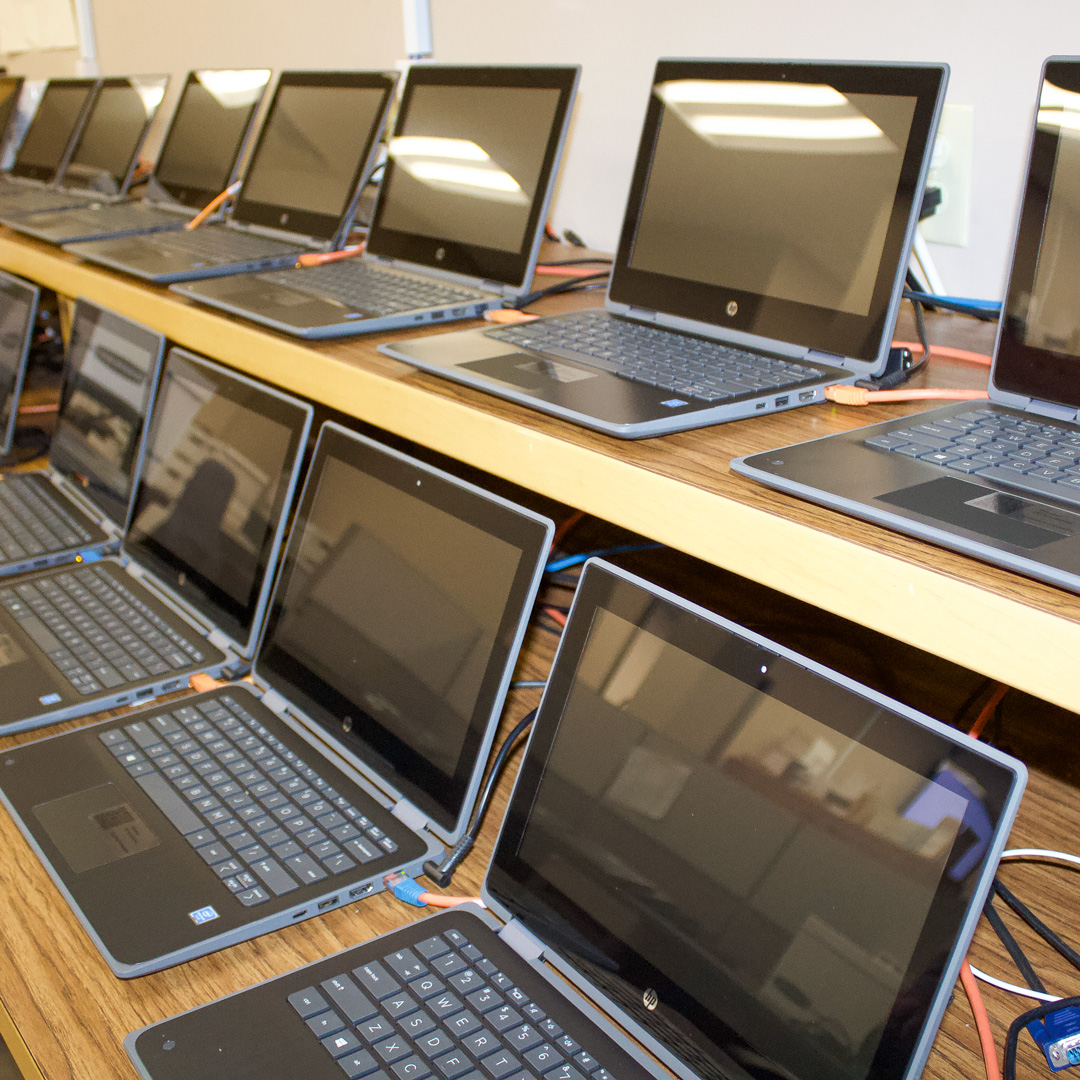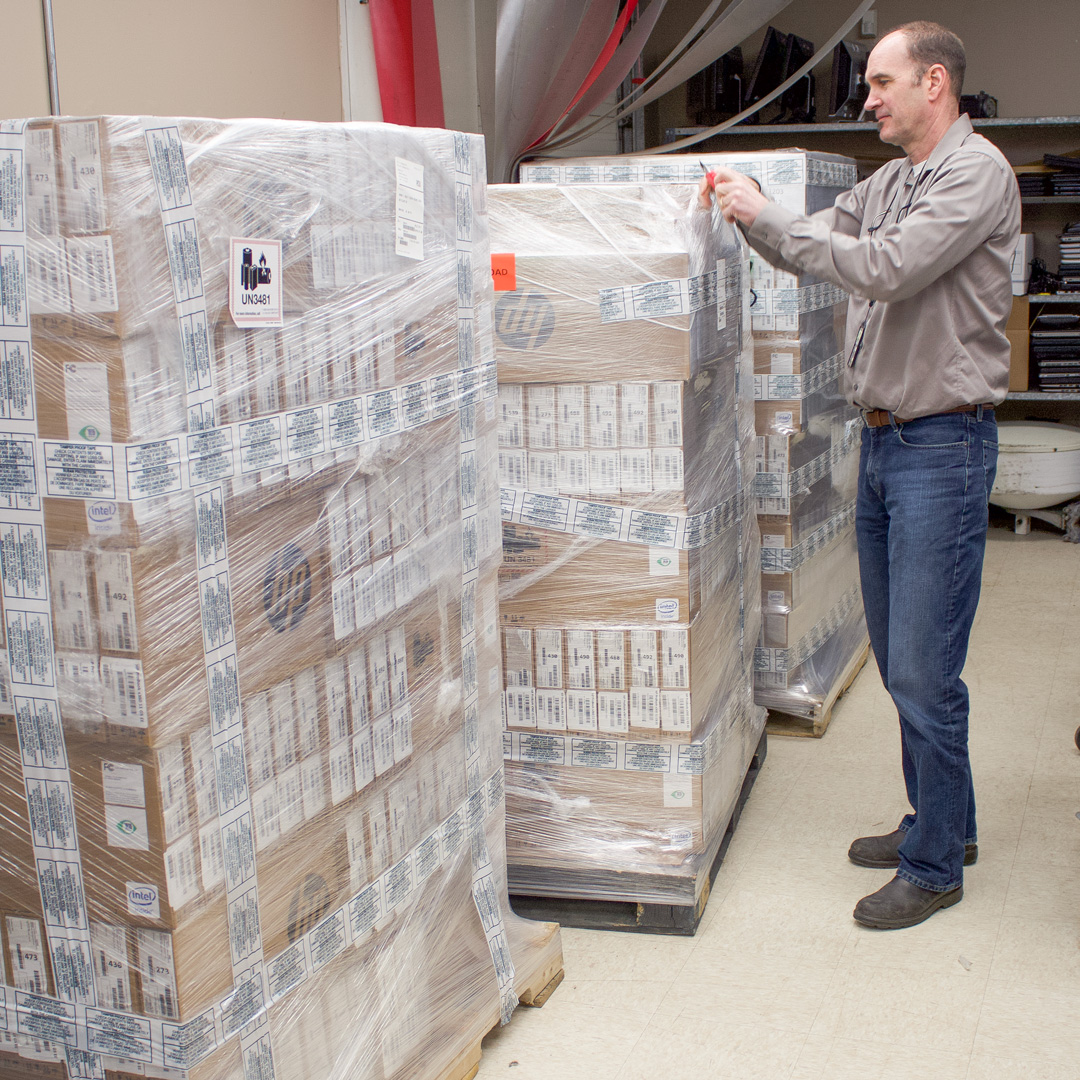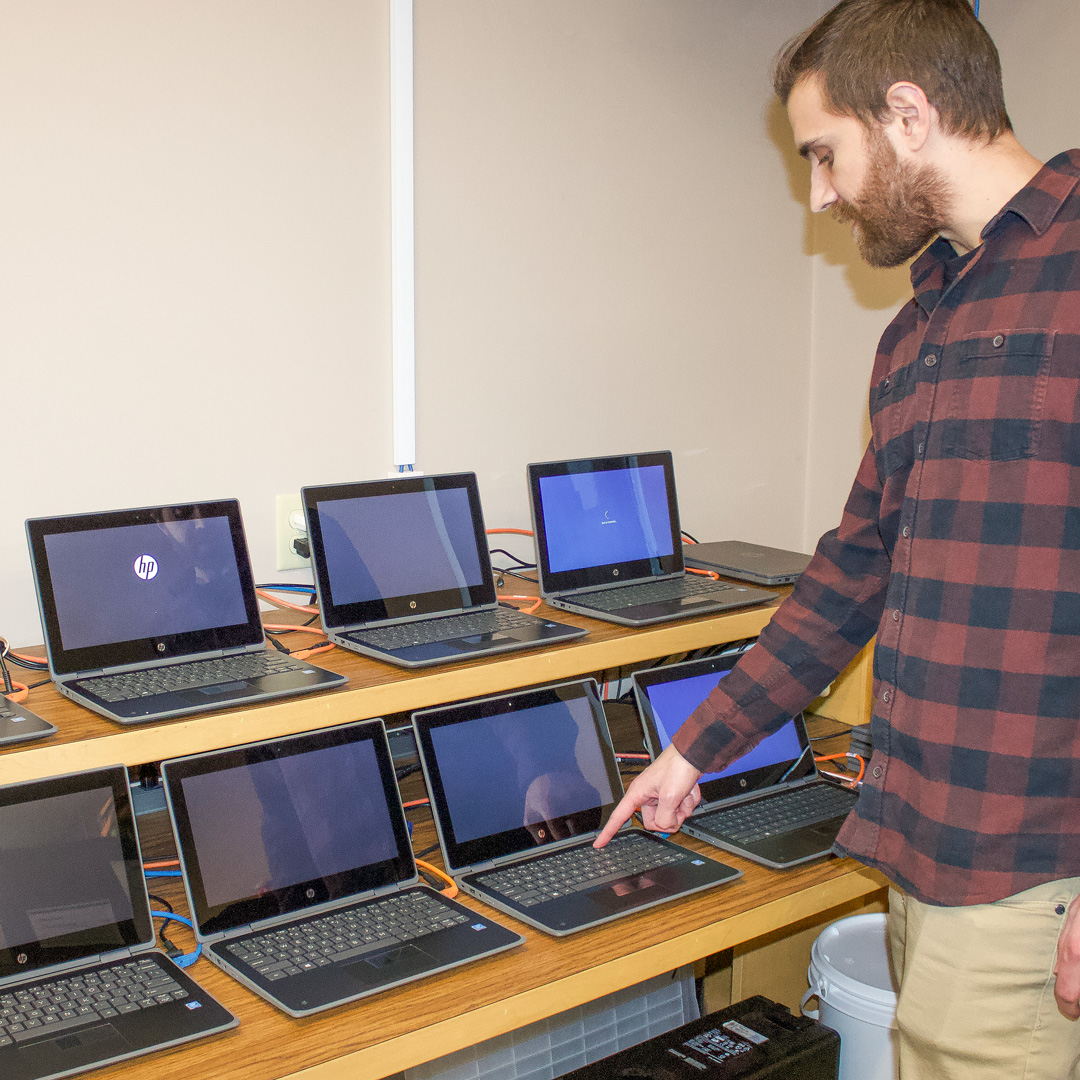Investing in Educational Technology to Optimize Learning
THURSDAY, JAN. 19, 2023
A
lot of laptops – 2,500 to be exact – have been optimized for learning and are now making the journey across the region and into Grand Erie classrooms. From there, the possibilities are endless in terms of how they’ll be put to use to unlock imagination, inspiration and connection for learners and educators.
The purchase of additional laptops was made possible by the board’s recently revised budget for the 2022-23 school year, and the commitment to up-to-date technology aligns with strategic priorities related to learning and accessibility. It also closes the gap in terms of student-to-device ratios, ensuring students can use tech more often to personalize learning, explore interests and gain skills they’ll use throughout their school years, and beyond.
Lots of work goes on behind the scenes to make sure classrooms are ready for the future and supported in their use of tech; the Information Technology Services team had the task of imaging, tagging and adding the Grand Erie asset management system to each of the HP ProBooks with touchscreen technology before they were deployed. The team is also instrumental in keeping learning with technology safe, secure and accessible to all.
Grand Erie is in the second year of its multi-year strategic plan, and the additional investments in technology, as well as hands-on resources including books to refresh library collections, math manipulatives and literacy materials, goes a long way to realizing the vision to learn, lead and inspire.
Good Food Adds Up to Good Learning at Courtland Pubic School
Evidence suggests that breakfast and snack programs in schools:
- Improves children’s school performance, memory and test grades
- Enhances students’ physical, emotional, social and intellectual development
- Increases attendance rates, particularly for nutritionally at risk children
- Provides additional time for children to eat and drink nutritious breakfasts and snacks
- Provides energy for students to be more physically
- Enhances nutritional status of students by replacing the consumption of foods with low nutritional value with more nutritious choices, such as more vegetables and fruit
- Promotes a sense of community by bringing people together to ensure all children are well-nourished
- Leads to better dietary habits by increasing the frequency of eating breakfast
- Reduces the prevalence of vitamin and mineral deficiencies
With the generous support of the Child Nutrition Network and the Grand Erie District School Board, the school was able to renovate a room in the school into a nutrition program kitchen. Funds provided by the Child Nutrition Network and school fundraising monies purchase the good food and materials needed to run the program.
Every morning at 8 a.m., parent volunteers and their children arrive to prepare and distribute the food for the day. This program would not happen without their enthusiastic support.
Each serving of food includes a dairy product (i.e. yogurt, cheese string), a grain product (i.e. crackers, mixed cereal, muffin, whole wheat bun) and a fruit product (i.e. apple, banana, clementine orange, grapes, juice) or a vegetable product (i.e. cucumber slices, raw carrots). A container filled with food is delivered to each classroom and as children get settled for a day of learning, staff and students are encouraged to help themselves to a delicious and nutritious start to the day.
“Nutrition programs, such as the one at Courtland Public School, are happening in many schools within the Grand Erie District School Board. It’s a huge effort supported by the Board, volunteers and community agencies. Working together, it’s amazing what can be done. We feel most grateful to have this opportunity for our Courtland school community”, says principal Deb Opersko.
Roots of Empathy
Courtland Public School offers the Roots of Empathy program in our Kindergarten A classroom. Our Early Childhood Educator, Mrs. L. Wildman is a trained Roots of Empathy instructor. Our Roots of Empathy baby and her mom are welcome visitors to the classroom.
An explanation of program, from the Roots of Empathy website is included below:
Roots of Empathy is an evidence-based classroom program that has shown significant effect in reducing levels of aggression among schoolchildren by raising social/emotional competence and increasing empathy. The program reaches elementary schoolchildren from Kindergarten to Grade 8. In Canada, the program is delivered in English and French and reaches rural, urban, and remote communities including Aboriginal communities. Roots of Empathy is also delivered in New Zealand, the United States, Isle of Man, the Republic of Ireland, Northern Ireland and Scotland.
Emotional Literacy
At the heart of the program are a neighbourhood infant and parent who visit the classroom every three weeks over the school year. A trained Roots of Empathy Instructor coaches students to observe the baby's development and to label the baby's feelings. In this experiential learning, the baby is the "Teacher" and a lever, which the instructor uses to help children identify and reflect on their own feelings and the feelings of others. This "emotional literacy" taught in the program lays the foundation for more safe and caring classrooms, where children are the "Changers". They are more competent in understanding their own feelings and the feelings of others (empathy) and are therefore less likely to physically, psychologically and emotionally hurt each other through bullying and other cruelties. In the
Roots of Empathy program children learn how to challenge cruelty and injustice. Messages of social inclusion and activities that are consensus building contribute to a culture of caring that changes the tone of the classroom. The Instructor also visits before and after each family visit to prepare and reinforce teachings using a specialized lesson plan for each visit. Research results from national and international evaluations of Roots of Empathy indicate significant reductions in aggression and increases in pro-social behaviour.





